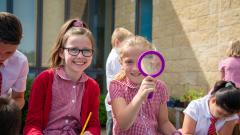
On this page, you will find links to examples of children's learning, showcasing their talents. The learning is organised chronologically, showing the progression of children's skills and knowledge as they make their journey through school. Each piece of learning indicates the outcome children have achieved in a caption alongside.

